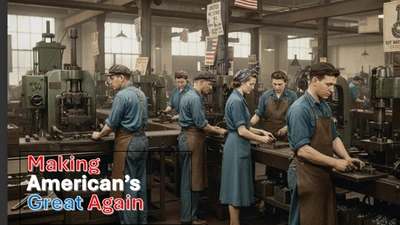The 2025 Nobel Peace Prize has been awarded, closing the book on one of the year’s most speculated-upon political dramas. For investors, the prize announcement (or lack thereof for a certain American President) is merely background noise to the far more significant market phenomenon: an environment defined by the unexpected intersection of geopolitical deal-making and a non-stop technology supercycle.
President Trump’s foreign policy is best described as "Peace-Through-Transaction." While critics question the durability and human-rights components of the administration’s breakthroughs (such as the recent Gaza ceasefire framework and earlier agreements in the Caucasus and Africa), the market perceives these developments through a purely transactional lens: Any reduction in overt conflict, however fragile, removes tail risk and encourages capital flow.
Here is the punchy, current state of the global investment market:
1. Equities: The AI Train Knows No Geopolitical Bounds
The stock market’s resilience is an uncompromising bet on technology and productivity, largely ignoring the policy volatility that defines the rest of the world.
- The Unstoppable Force: The Artificial Intelligence (AI) mega-force continues to power the indices. Money is flowing not just into the software and algorithms, but into the physical assets that power them: specialized semiconductors, next-generation data centers, and the energy infrastructure to run them. The high valuations are a reflection of expected future productivity gains, and investors are shrugging off concentration warnings.
- The Peace-Trade Spillover: When a major conflict—like the one in Gaza—shows signs of de-escalation, it boosts broad market sentiment, particularly for global industrials and travel, and reduces oil price volatility. Investors see the President's diplomatic style as a disruptive, high-risk, high-reward approach to stabilizing critical regions, and the resulting calm is priced as a near-term win.
2. Fixed Income: The Cost of Geopolitical Disruption
The bond market is where the true cost of transactional diplomacy and 'America First' fiscal policy is being paid.
- The Tariff-Inflation Problem: New trade policies and tariff regimes are causing a subtle but persistent upward pressure on domestic inflation, making the Fed's job of easing rates more complicated.
- The Debt Drag: Record government debt levels mean the long end of the yield curve is anchored high, largely ignoring the Fed's short-term rate cuts. For investors, this means the environment favors high-quality corporate credit over long-duration government bonds, which are viewed as having too much fiscal risk attached.
3. Real Assets: The Industrial Re-Wiring
The real asset space is seeing a complete re-prioritization of capital, heavily influenced by the new geopolitical climate.
- The Reshoring Boom: A core pillar of the current policy approach is de-risking supply chains and encouraging domestic manufacturing. This is fueling a massive wave of capital into industrial real estate, logistics hubs, and domestic infrastructure projects. The era of pure global sourcing is yielding to one of regionalized or nationalized supply chains.
- Energy: The New National Security: The AI boom's insatiable hunger for electricity, combined with a clear policy mandate to prioritize fossil fuels and domestic energy independence, has made energy assets—from power generation to transmission—a central investment theme. This is where AI meets the physical world, creating a high-growth, high-capex environment.
The market is currently enjoying the upside of relative calm without fully pricing in the long-term fragility of transactional peace or the systemic risk of high public debt. For global investors, the winning strategy remains betting on the exponential growth of AI while actively diversifying against the unique and unpredictable policy risks coming out of Washington.










